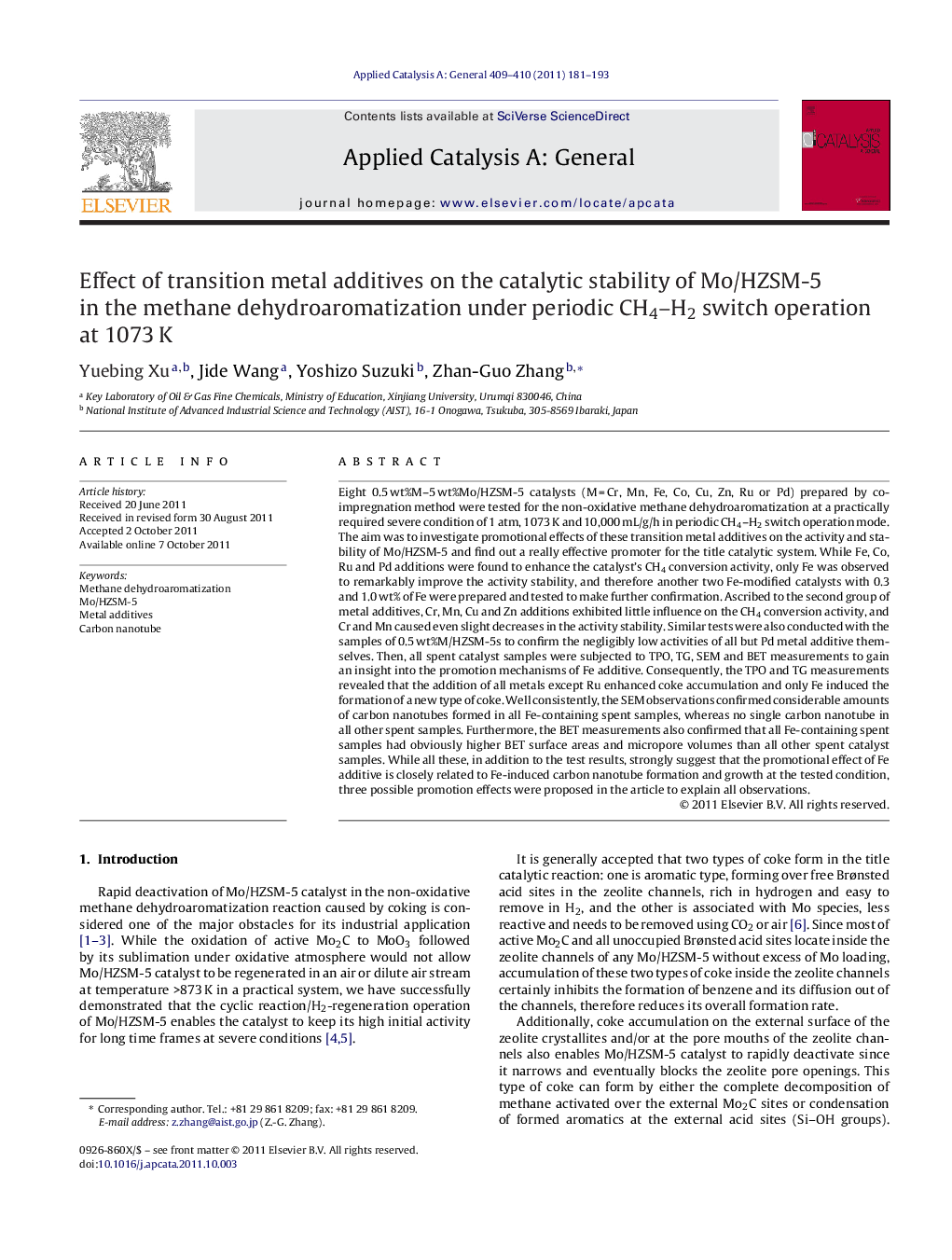| کد مقاله | کد نشریه | سال انتشار | مقاله انگلیسی | نسخه تمام متن |
|---|---|---|---|---|
| 41074 | 45876 | 2011 | 13 صفحه PDF | دانلود رایگان |

Eight 0.5 wt%M–5 wt%Mo/HZSM-5 catalysts (M = Cr, Mn, Fe, Co, Cu, Zn, Ru or Pd) prepared by co-impregnation method were tested for the non-oxidative methane dehydroaromatization at a practically required severe condition of 1 atm, 1073 K and 10,000 mL/g/h in periodic CH4–H2 switch operation mode. The aim was to investigate promotional effects of these transition metal additives on the activity and stability of Mo/HZSM-5 and find out a really effective promoter for the title catalytic system. While Fe, Co, Ru and Pd additions were found to enhance the catalyst's CH4 conversion activity, only Fe was observed to remarkably improve the activity stability, and therefore another two Fe-modified catalysts with 0.3 and 1.0 wt% of Fe were prepared and tested to make further confirmation. Ascribed to the second group of metal additives, Cr, Mn, Cu and Zn additions exhibited little influence on the CH4 conversion activity, and Cr and Mn caused even slight decreases in the activity stability. Similar tests were also conducted with the samples of 0.5 wt%M/HZSM-5s to confirm the negligibly low activities of all but Pd metal additive themselves. Then, all spent catalyst samples were subjected to TPO, TG, SEM and BET measurements to gain an insight into the promotion mechanisms of Fe additive. Consequently, the TPO and TG measurements revealed that the addition of all metals except Ru enhanced coke accumulation and only Fe induced the formation of a new type of coke. Well consistently, the SEM observations confirmed considerable amounts of carbon nanotubes formed in all Fe-containing spent samples, whereas no single carbon nanotube in all other spent samples. Furthermore, the BET measurements also confirmed that all Fe-containing spent samples had obviously higher BET surface areas and micropore volumes than all other spent catalyst samples. While all these, in addition to the test results, strongly suggest that the promotional effect of Fe additive is closely related to Fe-induced carbon nanotube formation and growth at the tested condition, three possible promotion effects were proposed in the article to explain all observations.
Figure optionsDownload high-quality image (245 K)Download as PowerPoint slideHighlights
► Promotional effects of eight metal additives on the activity and stability of Mo/HZSM-5.
► Only Fe addition improves the activity stability at the tested severe condition.
► Fe-induced carbon nanotube formation is the origin of the promotional effect.
► Direct and indirect effects on suppression of accumulation of the surface coke.
Journal: Applied Catalysis A: General - Volumes 409–410, 15 December 2011, Pages 181–193